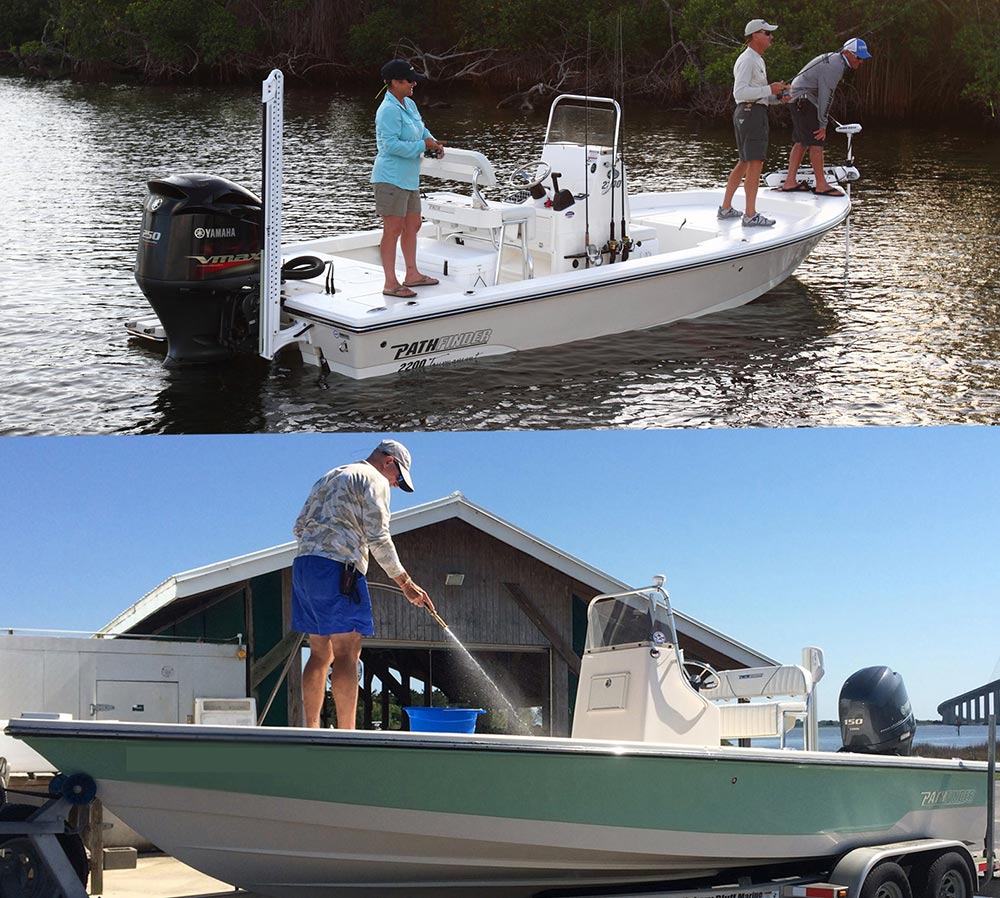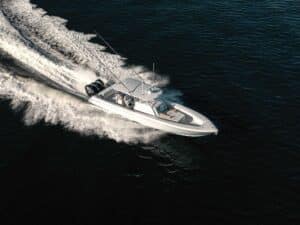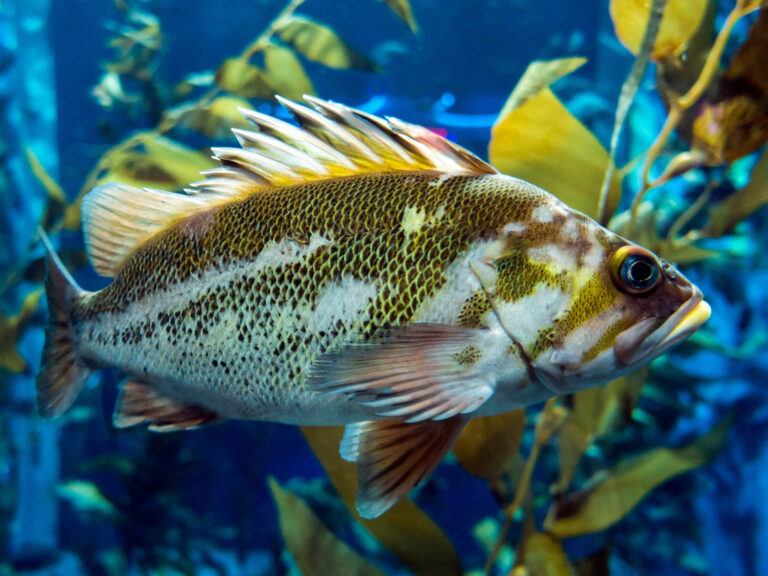
Pathfinder 2200 original and new
I am a major fan of bay boats. At heart, I’m a plain, ordinary inshore angler who enjoys everything from float fishing for trout to fly fishing for tarpon. Oh, I love the blue water, too, but the older I get, the more I appreciate quiet waters and lighter lures.
That’s why I’m buying and outfitting a new Pathfinder 2200 TE this spring, and I plan to blog about the decisions and the process, and share several videos, as this new baby comes to life. (The mold will be prepped June 3!)
First Decision
When I first shopped bay boats about 13 years ago, I really wasn’t sure what I needed or wanted. Only a handful of such skiff designs were even made. Of course, now there are plenty — from 19- to 26-footers — many that I truly love and would own in a heartbeat.
I saw my first Pathfinder docked at an exclusive south Georgia hunting and fishing lodge called Cabin Bluff. That was back in 2001, about three years after Maverick Boat Company owner Scott Deal first designed the brand. I was a new resident of coastal Georgia at the time, so I was impressed that this lodge had purchased a fleet of those skiffs.
It would be a few more years before my husband and I actually purchased a new Pathfinder — a 19-footer — but the memory of those skiffs kept me motivated. Since then, we’ve owned two subsequent Pathfinders — one basic 22-footer and one 22-foot tournament edition. We bought the last boat in 2007; we loved it and babied it from the day it arrived to the day it sold (one week after we placed it on the market).
Why this boat? In all truth, I admit that I have lusted after several other brands — boats I have tested in the past for the magazine or sea-trialed at boat shows. But because I entered the bay-boat market early, and have more experience with Pathfinder, I feel I better know its attributes. And while our initial purchase decision might have relied more on reputation and looks than familiarity, I now have a list of reasons why this particular boat fits the way we fish, who we fish with, and where we live.
- It crosses our often-choppy open bays and surf zones dryly and comfortably.
- At 22 feet, it easily fishes four anglers from its broad decks fore and aft, yet it’s compact and light.
- With a fuel-efficient Yamaha F150, it’s inexpensive to operate yet offers a quick hole shot and ample speed. (Note that we generally fish fairly close to our homeport. The 2200 can handle up to 250 horsepower — including Yamaha’s new F200 — but for our purposes, the lighter, smaller outboard works best.)
- It floats skinny enough to get us to most places we want to fish. No, we can’t pole it into the marsh after tailing reds, but we can inch up to the grass close enough to cast along the edges — on almost any tide.
- It comes with a 15-gallon livewell in the bow for shrimp and a 40-gallon well aft for larger bait or for use as a release well. (A third well is plumbed, but we mostly use it for storage.) A bucket with a cast net drops into the deck ahead of the center console.
I could include a number of other nuances — including the finish, the rod-storage capacity, the stable feel of the boat in messy seas, etc. — but suffice it to say, this boat fits our fishing and our wallet. Could other brands do the same? Absolutely. That’s why every buying decision is particular to the angler, his or her fishing style, his or her location and the overall budget. Know your habits, and know what you can afford.
Other Choices
As I mentioned, we decided on a Yamaha F150 to power this boat (Pathfinder works exclusively with Yamaha). Our experience has shown that this combination of fuel efficiency and speed suits us. This outboard has also proven very dependable.
The boat comes with some great standard equipment such as a 6-inch hydraulic jack plate and trim tabs. Options we ordered included lifting eyes for the transom and bow because we hoist boats into the water in this region. We also specified a sea-foam-green hull color like our last boat, which makes for a very attractive package.
In addition, we requested the leaning-post backrest with a cushion and spring-line cleats. We chose not to order a trailer through the manufacturer — though that is usually a good idea — because we have access to the right-size, tandem-axle trailer already.
Our immediate after-market additions will include two Optima batteries (with a small maintainer/charger), a multifunction electronics display (still being determined) on a RAM mount, and a Talon shallow-water anchor that will bolt to the transom.
Finalize Your Search
Know that all boats will have tradeoffs. If you’re looking for a certain price point, you might swap some comfort, capability or amenities to hit your budget. If you want a family boat, you’ll want to avoid an often-Spartan tournament model like ours.
When you sea trial a boat to buy it — and you should always sea trial — imagine spending eight hours on that boat. Imagine your family spending eight hours on that boat. What does it have and what does it lack?
Finally, you must consider where you’ll keep or store the boat and how you’ll finance and insure it. Keep in mind, too, that you will experience frequent gear angst — the urge to further outfit your baby with the coolest new gadgets and accessories.
Plan well, and your boat purchase will bring you fun and pleasure. Now that the market has improved, as well, you have more flexibility in buying and selling, and you have some great choices of boat models out there.
For a look at some of the top inshore center-consoles, check out our gallery of those models. Or view a gallery of some of the decade’s top boats, or 25 Dream Boats from captains around the country.








